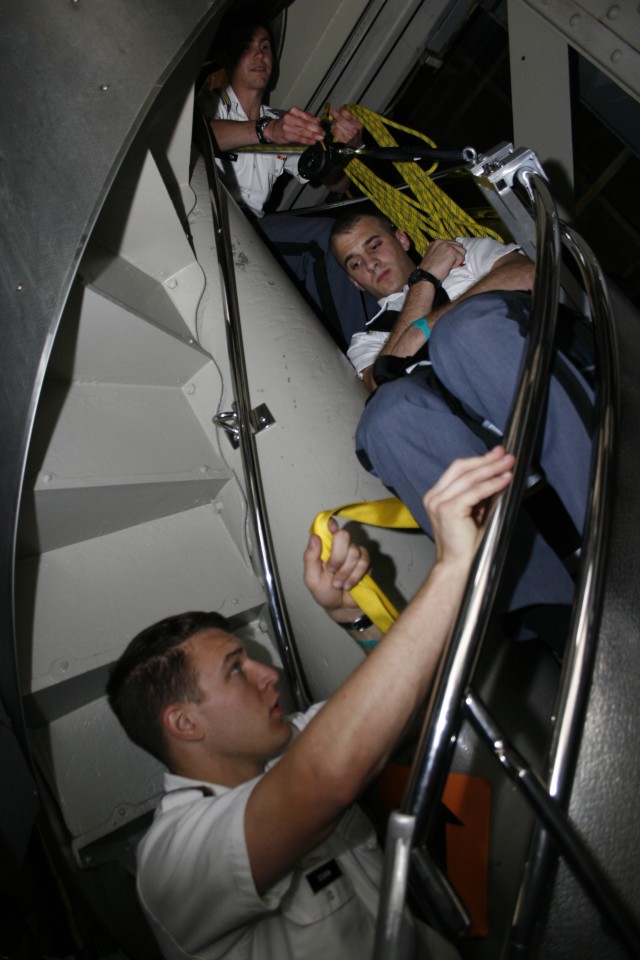WEST POINT, N.Y. (May 13, 2010) -- Eight cadets spent the better part of a year with one particular lady in mind. She stands more than 150 feet tall, from foot to crown, and is known to most as lady liberty.
On May 5, a team of civil and mechanical engineering majors visited the Statue of Liberty for a live demonstration of their capstone project, a device which makes evacuating casualties inside the national monument safer and faster. The statue's unique double-helix staircase, 146 steps from pedestal to crown, offers visitors an amazing view of New York City.
But from a first-responder perspective, the cramped and narrow space becomes a challenge when assisting the sick or injured back to ground level. That challenge was passed onto the cadets, all of whom will be graduating May 22, to design and build a better evacuation system.
No small feat, considering the regular schedule of academics and athletics, but Cadet David Watts, mechanical engineering team leader, said they still managed to invest thousands of hours into this historic project. The team overcame setbacks, stresses and failures, but, ultimately, achieved their goal ahead of deadline.
The evacuation device consists of a reclining seat set upon a collapsible aluminum frame and is able to support 350 pounds of weight. When attached to the railing, a rope belay system uses mostly gravity to lower a casualty down the spiral staircase. In places where the railing ends, an aluminum gap replacement bridge was designed to accommodate those areas.
The team of Watts, Nick Reisweber, Thanat Boonprasert, Alex Mumford, Spurgeon Petty, Rick Storm, Greg Griffith and Diana Worth successfully demonstrated this to the National Park Service superintendent and staff, emergency medical service personnel and members of the local media.
Crammed within the confines of the stairwell, cadets explained the design concept, process of evacuation and the means by which they achieved this final design. There was no doubt the team impressed the group of invited guests as they broke into a round of applause for the future Army officers. Maj. Mark DeRocchi, civil and mechanical engineering executive officer, and Maj. Joel Dillon served as the team's officers-in-charge and advised the cadets throughout the process.
DeRocchi said it was rare to find a project of this magnitude with such educational value that supports cadet involvement from start to finish.
"These eight cadets have spent countless hours creating this device on a very short timeline, and they've performed magnificently," DeRocchi said. "The fact that we are able to assist this national icon to remain open to the public for future generations, and perhaps help a visitor in their time of need, only makes this project that much more valuable."
Just as Watts is about ready to enter into service for his country, he hopes what he and the other seven cadets have done will serve the public for years to come.
"I hope one day I can take my family inside the Statue of Liberty and it will still be there," Watts said. "I can say to my kids, 'Daddy was on the team that built that.'"






Social Sharing